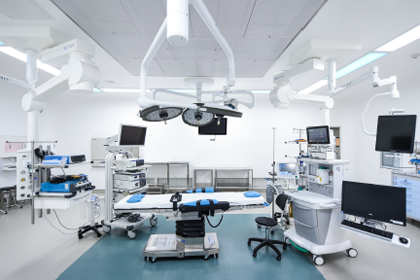Search
Related Articles
What are non-pharmacological therapies for pain?
Non-pharmacological therapies are ways to decrease pain in addition to medicine. Your doctor will help you choose therapies that are right for you. Your provider will explain the advantages for each treatment and which may work best for the cause of your pain. Each person may respond to these therapies differently.
Why is pain control important?
If pain is not treated, it can decrease your appetite and make it difficult for you to sleep. You may feel that you lack energy or the ability to do things. Pain can also affect your mood and relationships with others. Non-pharmacological therapies may help decrease your pain or give you more control over your pain. This can improve your quality of life.
What therapies are used with medicine to help control pain?
• Heat helps decrease pain and muscle spasms. Apply heat to the area for 20 to 30 minutes every 2 hours for as many days as directed
• Ice helps decrease swelling and pain. Ice may also help prevent tissue damage. Use an ice pack, or put crushed ice in a plastic bag. Cover it with a towel and place it on the area for 15 to 20 minutes every hour, or as directed
• Massage therapy may help relax tight muscles and decrease pain
• Physical therapy teaches you exercises to help improve movement and strength, and to decrease pain
• A transcutaneous electrical nerve stimulation (TENS) unit is a portable, pocket-sized, battery-powered device that attaches to your skin. It is usually placed over the area of pain. It uses mild, safe electrical signals to help control pain
• A spinal cord stimulator (SCS) is an electrode implanted near your spinal cord during a simple procedure. The electrode is connected to a stimulator (a small box). The stimulator sends mild, safe electrical signals to the electrode. The electrical signals help relax the nerves that cause your pain
What other therapies may help control or reduce pain?
• Relaxation techniques can help you relax, relieve stress, and decrease pain. Common relaxation techniques include any of the following:
o Aromatherapy is a way of using scents to relax, relieve stress, and decrease pain. Aromatherapy uses oils, extracts, or fragrances from flowers, herbs, and trees. They may be inhaled or used during massages, facials, body wraps, and baths
o Deep breathing can help you relax and help decrease your pain. Take a deep breath in and then release it slowly. Do this as many times as needed
o Tense your muscles and then relax them. Start with the muscles in your feet then slowly move up your leg. Then move to the muscles of your middle body, arms, neck and head
o Meditation and yoga may help your mind and body relax. They can also help you have an increased feeling of wellness. Meditation and yoga help you take the focus off your pain
• Guided imagery teaches you to imagine a picture in your mind. You learn to focus on the picture instead of your pain. It may help you learn how to change the way your body senses and responds to pain
• Music may help increase energy levels and improve your mood. It may help reduce pain by triggering your body to release endorphins. These are natural body chemicals that decrease pain. Music may be used with any of the other techniques, such as relaxation and distraction
• Biofeedback helps your body respond differently to the stress of being in pain. Doctors may use a biofeedback machine to help know when your body is relaxed. You will learn what your breathing and heart rate are when you are relaxed. When you are in pain, you practice getting your breathing and heart rate to those levels. This may help you feel more control over your pain
• Self-hypnosis is a way to direct your attention to something other than your pain. For example, you might repeat a positive statement about ignoring the pain or seeing the pain in a positive way
• Acupuncture therapy uses very thin needles to balance energy channels in the body. This is thought to help reduce pain and other symptoms
Where can I get more information?
You can find related information on pain management and get assistance from the groups at: http://xwtt.sk8fg.com.
When should I contact my doctor?
• Your pain does not get better, or you have new pain
• You have questions or concerns about your condition or care
CARE AGREEMENT:
You have the right to help plan your care. Learn about your health condition and how it may be treated. Discuss treatment options with your caregivers to decide what care you want to receive. You always have the right to refuse treatment.
© 2017 Truven Health Analytics LLC All illustrations and images included in CareNotes® are the copyrighted property of A.D.A.M., Inc. or Truven Health Analytics.
Click the link for more information on Rehabilitation Clinical Service
Click the link for more information on Psychology and Mental Health Clinical Service
Click the link for more information on Traditional Chinese Medicine Clinical Service
Click the link for more information on Pain Clinic Clinical Service











